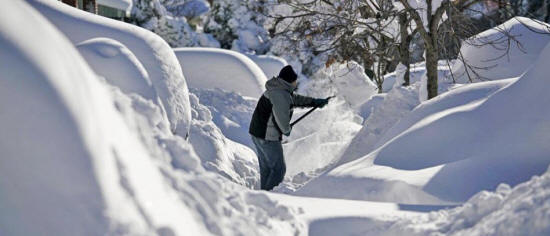|

by Michael Bastasch
October 31, 2016
from
DailyCaller Website

Until
radical-with-an-agenda climate change scientists
entered the arena, scientists routinely believed
that activity of the sun was the key determinant to
earth's weather.
Unfortunately,
these extremist climate alarmists shamed, belittled,
and shouted down, traditional scientists.
Source
The Next
'Little Ice Age' is Already Here - Russian Scientist Claims
A new study by a prominent Russian astrophysicist claims the "new
Little Ice Age" started at the end of 2015 due to low solar
activity, kicking off decades of "deep cooling" in the latter half
of the 21st Century.
"As a result, the Earth has, and
will continue to have, a negative average annual energy balance
and a long-term adverse thermal condition," Dr. Habibullo
Abdussamatov, who is the head of space research for the Pulkovo
Observatory at the Russian Academy of Sciences,
wrote in a recent study (The
New Little Ice Age Has Started).
"The quasi-centennial epoch of
the new Little Ice Age has started at the end 2015 after the
maximum phase of solar cycle 24," Abdussamatov wrote.
"The start of a solar grand
minimum is anticipated in solar cycle 27 in 2043 and the
beginning of phase of deep cooling in the new Little Ice Age
in 2060."
Habibullo Abdussamatov's latest
work was translated into English and featured in
a new book by geologist Don Easterbrook on evidence
opposing the mainstream view that carbon dioxide is the main source
of recent global warming.

Abdussamatov argues that declining solar
activity will cause a gradual cooling over North America and Europe,
which could recreate the conditions experienced during the "Little
Ice Age" - cooler periods from Middle Ages to the mid-19th Century
that coincided with a lull in sunspots.
"The gradual weakening of
the Gulf Stream leads to stronger cooling in the zone of
its action in western Europe and the eastern parts of
the United States and Canada," Abdussamatov wrote.
"Quasi-bicentennial cyclic
variations of [total solar irradiance] together with
successive very important influences of the causal
feedback effects are the main fundamental causes of
corresponding alterations in climate variation from
warming to the Little Ice Age," he wrote.
Abdussamatov
previously predicted declining
solar activity would lead to a
new "Little Ice Age" in the next 30 years.
For years, some scientists have warned
that declining solar activity could bring cooler global
temperatures in the coming years, but this view has been contested
by many scientists who see greenhouse gases, like CO2,
as the primary warming agent.
A 2015 study led by Met Office scientist
Sarah Ineson
found the overall
cooling effect of a "grand solar minimum"
would be marginal - only offsetting 0.1 degree Celsius of greenhouse gas
warming.
Though regional impacts could be more
pronounced, Inseon found.
Her study found northern Europe could
see 0.4 to 0.8 degrees of cooling if solar activity hits record low
levels.
"This research shows that
the regional impacts of a grand
solar minimum are likely
to be larger than the global effect, but it's still
nowhere near big enough to override the expected global
warming trend due to man-made change," Ineson said in a
statement.
"This means that even if we
were to see a return to levels of solar activity not
seen since the Maunder Minimum, our winters would likely
still be getting milder overall," she said.
But sunspot aficionados argue the
"pause" in global average temperature since the late 1990s coincides
with decreasing solar activity.
Most scientists say the "pause" in
global warming was caused by ocean
oscillation cycles.
"Since 1990, the Sun has
been in the declining phase of the quasi-bicentennial
variation in total solar irradiance," Abdussamatov
wrote.
"The decrease in the portion
of TSI absorbed by the Earth since 1990 has remained
uncompensated by the Earth's long-wave radiation into
space at the previous high level because of the thermal
inertia of the world's oceans."
|



